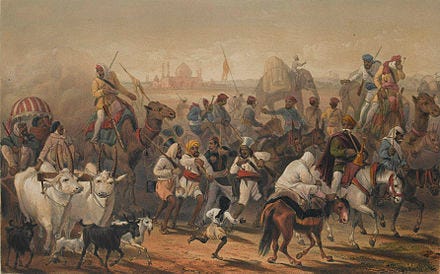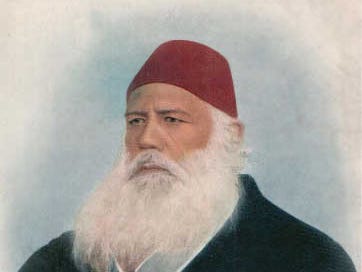The Two Nation Theory and The Partition of British India
How the legacy of British rule, the 1857 Rebellion, and the Two-Nation Theory shaped The Indian Subcontinent’s most volatile faultline.
Introduction
The Kashmir Conflict is a contentious flashpoint between India and Pakistan. It is also a flashpoint monitored by global powers due to its chances of tumbling out of control into a full-fledged nuclear war, particularly due to Pakistan’s threats of using nuclear weapons since 1999. To understand the deadly Pahalgam Attack of April 2025, the Kashmir Conflict, and the geopolitical rivalry between India and Pakistan, it is vital to delve into the British Colonial history of India. In particular, the 1857 Rebellion and the events that followed, culminating in the Partition of India in 1947.
The 1857 Rebellion
This 1857 Rebellion was the first major pan-Indian resistance against British rule, involving various communities, including Muslims. The British authorities quelled the rebellion and subjected the Muslims (and other communities) to discriminatory policies that contributed to their socio-economic stagnation.

In response, Sir Syed Ahmed Khan emerged as a reformist. Khan realized the importance of politically organizing the Indian Muslim community. He emphasized the distinct identity of Muslims on the basis of religion, social, and political factors. He perceived the British Hostility towards Muslims, coupled with the rise of Hindu cultural revivalist movements as an existential threat to Islam in the Indian Subcontinent.

The Two Nation Theory and the Partition
The emphasis on a distinct Muslim identity set the ideological framework of the Two-Nation Theory, which stated the Hindus and Muslims were two distinct Nations with separate identities, customs, and traditions. It gained traction in the early 20th Century, and materialized in the form of the 1940 Lahore Resolution, later known as the ‘Pakistan Resolution’, presented by the All-India Muslim League, a party created to represent Indian Muslims. It called for the creation of separate states for the Muslims of British India. It strengthened Muhammad Ali Jinnah’s position and increased his popularity. In 1946, The Muslim League won in 425 out of 496 seats that were reserved for Muslims, and this victory prepared the base to create Pakistan. Lord Mountbatten, the last Viceroy of British India, introduced the Indian Independence Act in June 1947. Politically speaking, India was divided into 500+ princely states, administered by local rulers, and British Possessions. Princely States could choose their allegiance, and British Possessions would vote for the same. Muslim-majority areas in the northwest and east were carved out to form West and East Pakistan. The provinces of Punjab and Bengal were partitioned along religious lines, setting the stage for one of the largest and bloodiest mass migrations in history. Source.
The Partition ended up in the creation of 2 (eventually 3) countries, namely the Republic of India and the Islamic Republic of Pakistan. In 1971, the Muslim-majority Bengali speaking part of Pakistan, then known as East Pakistan separated from Pakistan in a bloody and gruesome war which killed millions. This area is now known as Bangladesh.

Conclusion
The Kashmir Conflict cannot be understood without unpacking the history of British Imperialism, the Two Nation Theory, and the demand for Pakistan. The conflict continues to remain not just a thorn in India-Pakistan relations, but a symbol of unresolved histories and competing nationalisms—a scar born out of identity politics that Pakistan was built on.



